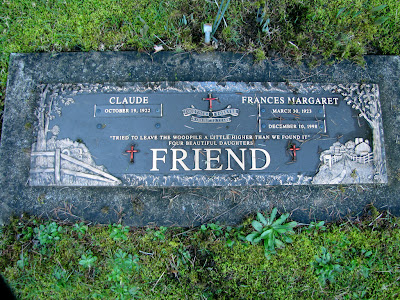 |
| Bay City IOOF Cemetery |
On the other hand, think of America again. Before the advent of America, the country, America the place was a ruthless and dangerous world, a place of a thousand wars. Everyone was more or less permanently at war with everyone else; at least until one got down to the Aztecs. After Western governments appeared, the internal wars all but disappeared. What was left of the Indians after disease ripped through them fought a passionate but hopeless rear-guard action against the government, then it was all over.
I say this, not to promote the U.S. as a harbinger of peace, far from it; but to point out, that, even while empires grow and often engage in violent, inexcusable behavior, their overall effect is to increase the amount of peace in the world and to decrease the chances one has of being the victim of violence. Any kind of violence.
Would I go so far as to say large countries are the cause of increasing peace in the world? Well, they’re one part. America may be fighting on innumerable foreign fronts, but at home she’s been quite for nearly a hundred-and-fifty years. And you can tag on seventy-five years of peace prior to that conflict. Care to compare that nearly two-hundred-and-fifty years with Europe? There’s something to be said for being one country.
But the peace descending on the world is more complex than just that. It may be impossible to find the progenitor of peace, but it’s not so hard to find parallel paths. It’s hard to say that increasing country size causes increasing peace/safety, which may rather be the result of detribalization. Or is there a difference between the two? Would a difference make a difference? One can find many parallels. Violence decreases with education, urbanization, rise in standard of living, automobile use, enhanced communication, birth control, abortion, and additions to the periodic table of elements. Do any of these things have to do with decreasing violence? Yes, to one degree or another, they all do; they are a part of the march of civilization, and it’s the march of civilization which, news media, fundamentalists, and Republicans to the contrary, has made this world an infinitely safer place than the one we inherited. And it’s getting safer every day. Let’s hear it for civilization!
An important concomitant is the rise of secularism and the demise of religion. I know that’s hard to believe in this era of religious fanaticism, but, overall, religion has been steadily losing ground to reason for hundreds of years. And as religions are, by design, separators, not uniters, of people, as the influence of religion wanes, international cooperation gains.
Alrighty then, what, you may ask, does this have to do with cemeteries?
Thought you’d never ask.
A news blip reported in the ICCFA Magazine (June, 2011), a trade magazine for the funeral business: they reported that celebration was taking over from mourning in English funerals. I don’t know that the percentages would be the same, but I’m confident you’d find the same trends in the U.S. (England tends to be more cutting-edge than us when it comes to the art of dying.) It’s not easy to know quite what the British mean by the terms they use, but the general drift is clear: people are lightening up.
The report breaks down funeral styles into “traditional,” 67%; “contemporary,” 21%; and “humanist,” 12%. You’ll have to shove your own definitions into those categories. I’m presuming “humanist” is code for “atheist,” although how that fits with “contemporary” is a little fuzzy. And “traditional” doesn’t necessarily mean “mourning,” as the same article claimed 49% of all funerals as having a “tone [of] celebration rather than mourning.” One can be a dour Christian or a happy one, apparently.
The report went on to mention a few other curious data, such as 31% of funerals “involved personal input from mourners,” and that 35% “involved personalized flowers.” I’m not privy to the difference between personalized and impersonal flowers, but they, evidently, know. If those classifications aren’t slippery enough, they left us with saying 36% of funerals “had purely religious music,” whereas 64% had “contemporary, classical, or a mixture of both.” Again, I’m in the dark as to whether they classified the Beatles as “contemporary” or “classical.”
All I know is that, when you visit a cemetery in Oregon these days, you find surging personalization in tombstone design. Armageddon may be upon us, but it’s not being accompanied by the Four Horsemen of the Apocalypse. The spirit of departure these days is less likely to be “Trust in Jesus,” than it is to be as Claude and Frances Friend wrote on their Scottsburg Cemetery stone:
“Tried to leave the woodpile a little higher than we found it.”
Amen.
 |
| Scottsburg Cemetery |

1 comment:
Leaving the wood pile a little higher than we found it is something we should all aspire to.Always love reading your blog,and the pictures.
Post a Comment